The valgus deformation of the thumb of the foot is the most common orthopedic disease.Its main feature is the curvature of 1 plusnephalanx joint.In the early stages, it manifests itself in the form of a small growth near the thumb.Pathology has a slow development, so it is quite difficult to diagnose it at the initial stages.Valgus deformation is often combined with a violation of the blood supply to tissues, which leads to the development of arthritis or arthrosis.In the absence of treatment in the joint of the thumb, an acute inflammatory process occurs, called Bursite.
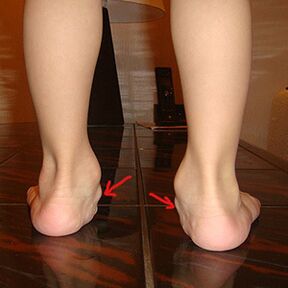
What contributes to the curvature of the finger?
The causes of valgus deformation can be different, the main among them are considered:
- flat feet;
- Congenital pathologies of the plusnoplange joint;
- muscle weakness, leading to pathological mobility of bone surfaces;
- foot injuries;
- The destruction of cartilage against the background of arthritis or arthrosis.
Wearing uncomfortable shoes to direct reasons for the occurrence of the disease does not apply, but it can accelerate the development of the pathological process.Therefore, Khalus Valgus is most often found in women.There are other pathological reasons why the first finger of the foot can bend.Osteoporosis develops when leaching of calcium from bone tissues, due to which they become less dense.This is what leads to a change in the shape of the joint.Almost every person who has symptoms of valgus deformation has one of 2 types of flat feet.Endocrine disorders contribute to a decrease in the strength of the ligaments, which is why they cannot hold the joint in the right position.The risk group includes women who are used to walking in high -heeled shoes.The provision of increased loads on the toes accelerates the process of curvature of the joint.Ballet dancers are forced to stand on socks for a long time, which can lead to deformation of the feet.So, Valgus deformation is found in only 3% of people under 30 years of age, while among the elderly every 5 people have a similar problem.This disease is most often found in patients whose parents had pathologies of the musculoskeletal system.
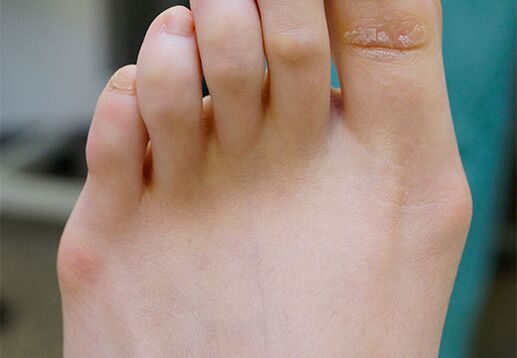
Clinical picture of the disease
The curvature of the thumb of the leg at the initial stages is quite difficult to notice.A person notices that he becomes uncomfortable to walk in the usual shoes.After a long stay in the standing position, pain syndrome occurs.Over time, the main sign of pathology appears - the deviation of the first metatarsophalangeal joint towards the second with the formation of the so -called cone.The rest of the fingers take the shape of hammering.The patient may experience chronic fatigue and difficulties in selecting shoes.Over time, corns appear on the skin of the feet, bringing many inconvenience to a person.The most common signs of valgus deformation are painful sensations associated with inflammation of the synovial membrane.A soft seal appears in the first finger.The skin of the affected area blushes and swells.Over time, bone corn is formed, irritating soft and cartilage.Strong pains appear while walking.The mobility of the joint is limited, the pathological process can cover all the fingers of the foot.
Several degrees of valgus deformation are distinguished, each of which has its own symptoms:
- Hallux Valgus of the 1st degree is characterized by curvature of the finger no more than 20 °.There is no pain at the same time.
- In case of 2 degree disease, the joint is shifted by 21-30 °.Unpleasant sensations are mild in nature, the mobility of the finger is not disturbed.
- With valgus deformation of the 3rd degree, the angle of curvature exceeds 30 °.Pain in the affected area acquire a constant character.They prevent a person from wearing familiar shoes, walking and playing sports.
- At 4 stages of the disease, the joint is shifted by more than 50 °.The deformation of this degree is characterized by strong pain, difficulties with the choice of shoes, the formation of a corn.
How this disease is revealed
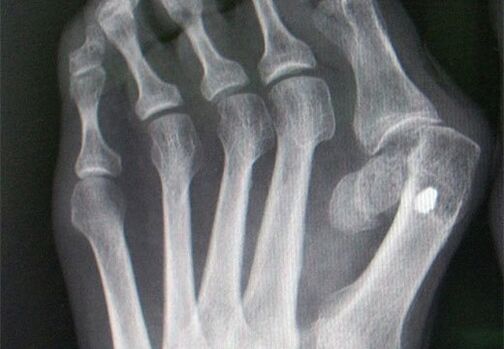
To make a preliminary diagnosis, an examination of the foot and a history of the anamnesis are carried out.The doctor should:
- evaluate the severity of the change of gait;
- The degree of curvature of the joint;
- the presence of corns;
- bone cones.
The main therapeutic measures
The choice of a particular methodology depends on the degree of deformation of the joint and the severity of the pain syndrome.The most effective treatment of valgus deformation of the thumb of the foot is in its early stages.Therapy can be both conservative and surgical.In addition, the development of orthopedic shoes, which contributes to the correct distribution of the load and prevents the appearance of corns, helps to suspend the development of the pathological process.To reduce pressure on the affected area, specialinsoles and gaskets.Due to the large number of side effects, these funds are not suitable for prolonged use.Drug therapy cannot completely save a person from valgus deformation.With its help, you can only eliminate pain and signs of inflammation.For the treatment of the disease, physiotherapeutic procedures are often used - diathermy or ultrasound.However, these methods also bring only temporary relief.The most effective is the use of orthopedic devices that are made taking into account the individual characteristics of the foot.The use of supporters and fingers in the early stages of the disease prevents further joint deformation.With advanced forms of the disease, orthopedic devices allow you to make walking more comfortable.With the help of special insoles, you can eliminate the main cause of curvature - flat feet.The operation is usually required for 3-4 degrees of valgus deformation, when conservative treatment is ineffective.The choice of the method depends on the degree of severity of deformation.With a slight displacement of the finger, only the bone growth is removed.To do this, a small incision is made in the affected area, after which the bump is cut and removed.
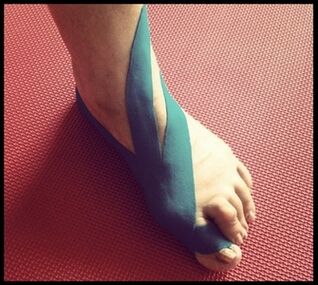
Distal osteotomy is aimed at reducing the angle of curvature.The lower part of the bone is dissected and installed in the correct position.Proximal osteotomy implies the effect on the upper part of the finger.During the operation of Keller - Brandes, the joint of the thumb is completely removed, the remaining synovial shell is placed between the plus bone and the main phalanx.Surgical interventions are used in most cases of advanced forms of valgus deformation.The effectiveness of treatment largely depends on the correctness of the implementation of rehabilitation measures.In the postoperative period, it is necessary to wear firm shoes or use special devices.To reduce the load on the operated leg, you need to use crutches.Shoes should have a wide toe and low heel.It should be remembered that any surgical intervention can lead to the development of complications.
The most dangerous are:
- soft tissue infection;
- osteomyelitis;
- bleeding;
- displacement of bone fragments;
- slowing of healing processes;
- Loss of fingers sensitivity.
More rare complications are avascular neurosis and post -traumatic arthritis.Prevention of valgus deformation is a constant visit to an orthopedist.Wear shoes with high heels should be refused.The use of orthopedic insoles is recommended.Long stay in a standing position is prohibited.Valgus deformation is a rather serious disease that can worsen the quality of the patient’s life, so the treatment should begin at its early stages.
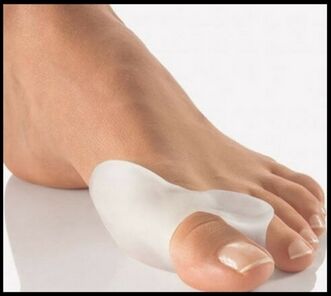
Khalus Valgus (Hallux Valgus) Treatment without surgery
Excessive body weight, wearing uncomfortable shoes, trauma of the feet lead to the appearance from the inside at the base of the thumb of painful, hyperemic protrusion.It is called - Hallux Valgus.What is Hallux Valgus?The definite term literally deciphered as follows: Hallux is a thumb, and Valgus is curvature.The formed protrusion is the medial part of the head of the first metatarsal bone.At the same time, it gradually departs from other metatarsal bones, which visually increases bulging in size.This disease is manifested by severe pain, it becomes impossible to wear ordinary shoes.The skin above the protrusion is constantly rubbed, inflamed, in rare cases they bleed.With untimely circulation of medical help, a significant deformation of all metatarsophalangeal joints occurs.The first and second finger is crossed, other fingers can bend involuntarily, while extension becomes impossible.
Causes of the disease
In order to better understand what the Khalus Valgus is, you need to know the causes and mechanism of the occurrence of this disease.It develops most often in women, since their ligamentous apparatus is not as strong as in men.Such a deformation does not develop independently, the effect of the following pathogenic factors is necessary for its manifestation:
- Increased body weight - in fat people, there is an increase in the load in the area of the plusno -flanning joints, which leads to stretching of the ligamentous apparatus, which connects the metatarsal bones;
- Narrow, uncomfortable, pressing, in high heels, shoes are the main trigger of this state.Frequent wearing of shoes with a narrow toe, also in high heels, contributes to a constant change in the physiological position of the thumb, which is why it gradually deviates out;
- Changes in the hormonal background, which often occurs in people of the fair sex, contribute to a change in metabolism and trophism of connective tissue, which leads to increased stretching of tendons, impaired their integrity;
- Traumatization - significant damage to the tendons of muscles that perform the leading and diverting functions, provokes the predominance of the efforts of one of them, which is the cause of the deviation of the first metatarsal bone;
- Diabetes mellitus - leads to the development of diabetic foot, which is characterized by impaired blood circulation and trophism of muscles, tendons and ligaments, which makes it possible to manifest itself to deformations;
- arthritis and arthrosis of the thumb of the legs can lead to the development of a chronic inflammatory focus, these diseases also stimulate the process of growth of osteophytes that can provoke deformation of the affected joint;
- Pregnancy is a period in the life of a woman, when complete hormonal restructuring occurs, and an increase in the abdomen transfers the load to the front parts of the feet, which provokes the development of the Khalus Valgus.
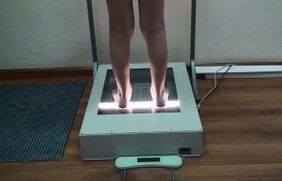
Stages of Hallux Valgus
The degree of gravity of Khalus Valgus is determined on the basis of the angle between the first metatarsal bone and the second, as well as the angle of deviation of the thumb from the first metatarsal bone.There are three stages of development of this disease:
- Hallux Valgus of the 1st degree is characterized by minimal deviations that make up: the inter -flood angle of less than 12 degrees, and the deviation of the thumb does not exceed 25 degrees.At the same time, patients may not be completely absent in pathognomonic symptoms, and visual changes are almost invisible.
- Khalus Valgus 2 degrees - is manifested by an increase in the inter -flood corner to 18 degrees, at this time the first finger is rejected more than 25 degrees.With this development of deformation, painful sensations appear, discomfort when wearing ordinary shoes.With excessive physical overstrain, the pain intensifies.The convex part of the plus bone head is constantly rubbed, hyperemic, swollen, which indicates an inflammatory process.
- Hallux Valgus 3 degrees is manifested by significant curvature, the angle between the metatarsal bones exceeds 18 degrees, and the first and second finger are crossed.A significant bulge of red color is observed on the inside, painful on palpation.Wearing any shoes becomes impossible due to pain, patients constantly limp, sparing the affected limb.
The treatment tactics depend on the neglect of the pathological process.In the first stages, you can do with conservative methods using tires and other fixing devices. The following stage require urgent surgery, without which the foot can deform, other undesirable complications will occur.
Halus treatment methods Valgus
Before starting treatment, it is necessary to exclude the impact of pathological factors.First of all, you need to reduce body weight.For this, patients are recommended to play sports, lead an active lifestyle.An important point is that when performing physical exertion, it is forbidden to apply forces on the affected limb.The appointment of diet therapy is an important step in the treatment of Khalus Valgus.A specialist can recommend an effective diet, but it must necessarily include products rich in vitamins and minerals that will help improve the condition of the affected joint.
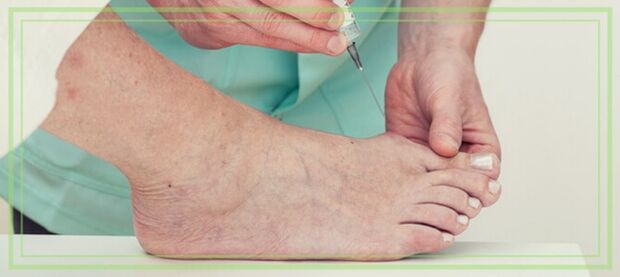
Orthopedic tires and fixators
They are used for constant fixation of deformed plus bone and finger closer to the rest of the foot.You can use rigid locks - tires that, when fixed on the foot, do not make it possible to move a finger.Such a device is used during sleep, as well as with a long rest.You can resort to the use of silicone fixers.There are silicone fixers that are attached only to the thumb, as well as attaching to all fingers.The main advantage of this development is the ability to walk in shoes in it.At the same time, the effective fixation of the plus bone continues, and the latch itself is practically not felt when wearing.























